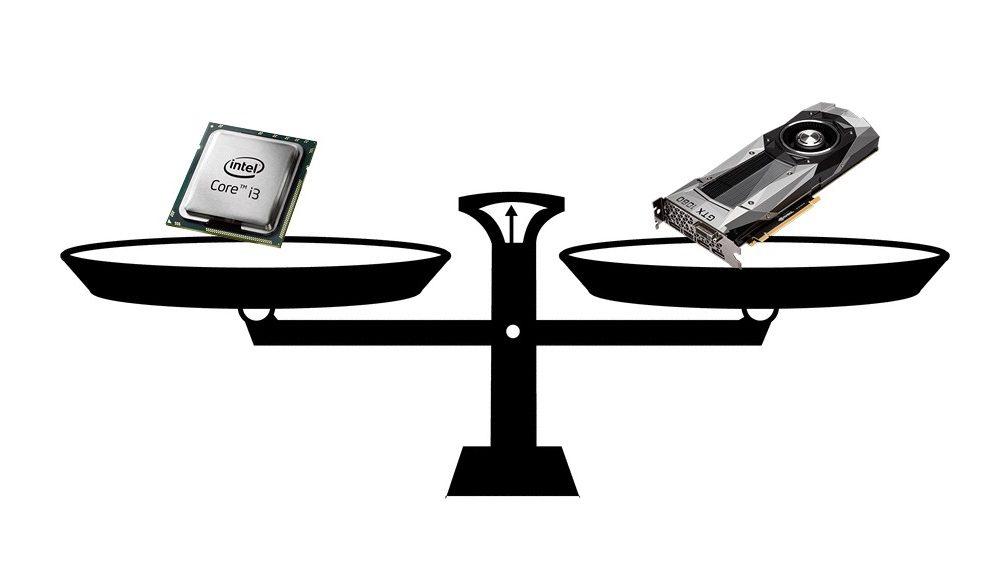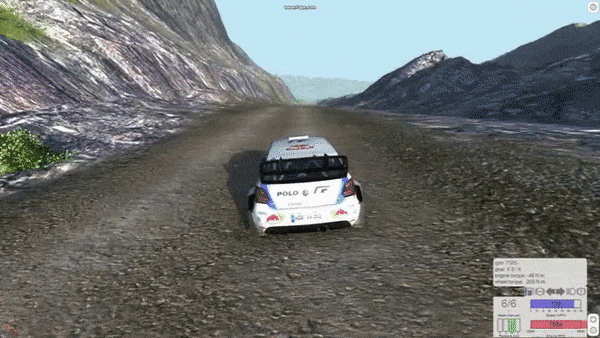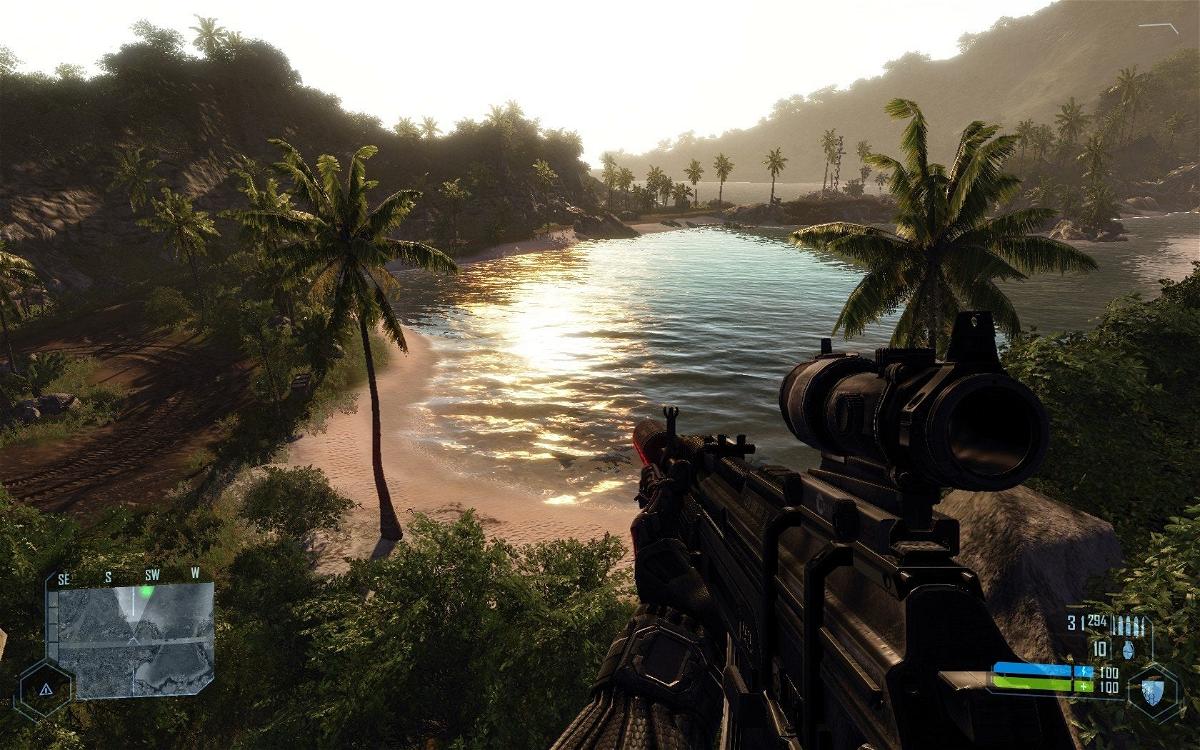Get to know the terms CPU and GPU Bound that often confuses you
Often we encounter the term CPU bound or GPU bound when reading performance analysis of a game. Sometimes, the writer/tester/reviewer will use these two terms to give the impression that the game will bring bottleneck risk to one of your PC components.
We are now officially on the platform Tiktok! Follow our Tiktok account at @gamebrott.com to find various information and our other interesting video content.
But, what the hell CPU or GPU bound that? then what does that have to do with bottleneck?
well, don’t fret. As promised in yesterday’s bottleneck article, this time we will discuss together what these two unclear terms mean.
Definition of “Bound”
The word “Bound” literally / literal in English means “lead“. Bound here acts as an adjective to describe the tendency of something to “lead” to a certain aspect.

In gaming terms, this means the tendency of a game to focus the process load on one specific component. Why did this happen? Well, there are many factors to find the answer, but what is certain is that this is closely related resources that need to be processed to run the game.
Role of CPU and GPU
Before we get into the main topic, it’s a good idea to study together first the role of the two components dear main in our PC. The goal is simple, hopefully if you understand the use of each component, then our next discussion will be easier to digest and more makes sense so.

Keep in mind, we will talk about the role of the CPU and GPU for business gaming well. We will not discuss the role of the CPU if it is used for rendering or GPU for mining, for example. We consider this narrowing of the topic necessary so that the discussion does not spread anywhere.
CPU Role
Talking about the role of the CPU here, it’s actually easy and complicated. Basically, anything that smells calculations/calculations and data processing will be a CPU business. The role of the CPU in gaming itself includes physics calculations, audio processing, animation processing, AI / bot algorithms in games, including data input in the form of player controls.
All calculations and data processing processes will later be given to other components as output result as well as for proceed to the next process. For example, the player control input will be passed to the game as a command, whereas the result of loading assets and resources will be given to the GPU to be processed into visual output.

So it’s not surprising, the more complicated and complex the data variables which must be processed by the CPU, then CPU load will also be higher. Can you imagine if a game that contains a lot of AI / bots will make your CPU work harder. In fact, minor factors such as poll rate Your mouse can also be effective here (albeit very small), because the higher the polling rate, the more data will be sent to the CPU.
In addition, the emulation process for console or mobile games that you play using an emulator will also be handled by the CPU, so makes sense right if the PPSSPP system requirements are much more demanding than the PSP’s own CPU specs.
GPU Role
This one component is clearly working. Everything that smells visual processing and framerate will be the responsibility of the massage oil GPUs. GPU output results will be displayed through the monitor/VR headset as visual delight you of course.
GPU processed materials include textures, anti aliasing, anisotropic filtering, visual effects (HDR, bloom, ray tracing, etc.), and also the screen resolution itself. In some cases, GPU also has a role for physics simulation as Nvidia does through PhysX.
Just like that? well, not really. Although the work is not as complicated as the CPU which has to take care of many things, the GPU is required to deliver performance consistently lol. Like a deadline, to chase 60 fps, a GPU must be able to “produce” 1 frame in 16.6 milliseconds! If not, then the phenomenon called micro stuttering will appear.
Well, if it’s clear, let’s get into our main topic now.
CPU Bound
A game can be said CPU bound if the processing load experienced by the CPU is greater than the game’s need for GPU performance. Games with a heavy data processing computational load rather than visual processing will be strong candidates in this category.
Examples of the most CPU bound games infamous and familiar in our minds is GTA 5. It can be seen from the tendency of the game which greedy for CPU performance but quite friendly with low end GPU. You can see evidence of this claim from the screenshot below.

In GTA 5, I can get a solid 60 fps with high settings + 1080p resolution use a cheap GPU. But on the other hand, the CPU usage in the game shows a fairly high number for an i7 processor which incidentally including high end when the game was released.
This of course makes gamers who use a weaker CPU so concerned bro, how can a low end CPU play when the high end one is just too busy?
To get around this, usually the developers of games that have the potential to be CPU bound will give the option to reduce the CPU loads. In GTA 5 itself there are settings population density to reduce the population for example.
With a decreasing population, then CPU load to handle a lot of AI processes will also go down, so users with slower CPUs can play the game comfortably.

Examples of other games that include CPU bound games are Sims 3, CS:GO, and DoTA. You can play these three games comfortably + right-aligned settings with lower-middle GPUs. However, once you use a low end CPU to play the game, it’s guaranteed FPS drop and stuttering will appear frequently.
GPU Bound
On the other hand, a game falls into the category GPU bound during the game have a large visual processing load but minimal data processing. This doesn’t mean that the game doesn’t have processed data, you know, it’s just that the visual portion is bigger. Examples of games with severe GPU bound you can see below.

It is clear that the CPU load which is only 18% indicates This game has a large GPU load but minimal CPU usage. Given the remaining margin is still very, very much (72%) then the game will be safe to play on slower CPUs.
You can find an example of the statement above in Witcher 3. The game made by CDPR famous for being cruel to the GPU but gentle to the CPU. Do not believe? Check out this screenshot we took from YouTube.

It is clear that the uploader plays Witcher 3 at a comfortable fps and loads the CPU and GPU equally. It may seem casual, but pay close attention to the title of the video. It is clear that the specifications used are: Ryzen 3 2200G juxtaposed with GTX 1660!
The fact that 2200G being able to draw against 1660 is quite surprising indeed, especially if we consider the price of AMD’s APU which is only half GTX 1660. But this is common in games that are very GPU bound. In a more neutral scenario, the GPU will certainly be hampered by the economical CPU.
Then is there a solution in the case of a game that is really GPU bound? Erm, well, most people think that GPU full load is good anyway, so yes there are not many tricks for this. But, if you want to find ways to increase FPS, there are a lot of things, starting from tinkering with the settings on the Nvidia/AMD control panel to looking for mods to lighten graphics.
Conclusion
So, so the TL;DR for those who are lazy to read is: CPU bound means the game will overload the CPU, GPU bound means the game will be GPU-heavy. Simple, right?
well, not quite. You see, this CPU/GPU bound concept in the end it will get stuck in a bottleneck. That’s because The bottleneck of a system depends largely on the load it carries. The concrete example is Witcher 3, where the APU 2200G, which is actually a different caste from the GTX 1660, can run fairly evenly in the game.
At the end of the day, choose the PC component is not as complicated as choosing a mate. The bottleneck issue is just a scourge mostly because most of it is do not understand the distribution of the load from the computer process. As long as you are sure that you will avoid CPU bound games, then buy the 2200G + 1660 cake part above, okay? no problem.
The scourge above is made worse by the presence of misinformation If you buy a doll part, it will be damaged, even though that’s not the case. There won’t be a story about PC parts that are torn apart and then they’ll break each other.
So, for those of you who want to build a PC, (especially for those who have no previous experience) rest easy. Know your PC’s purpose and keep looking for other people’s spec references to be a benchmark.
Finally, thank you for those who have read, hopefully what we share is useful for you. See you in the next article. Cheers!
Post a Comment for "Get to know the terms CPU and GPU Bound that often confuses you"